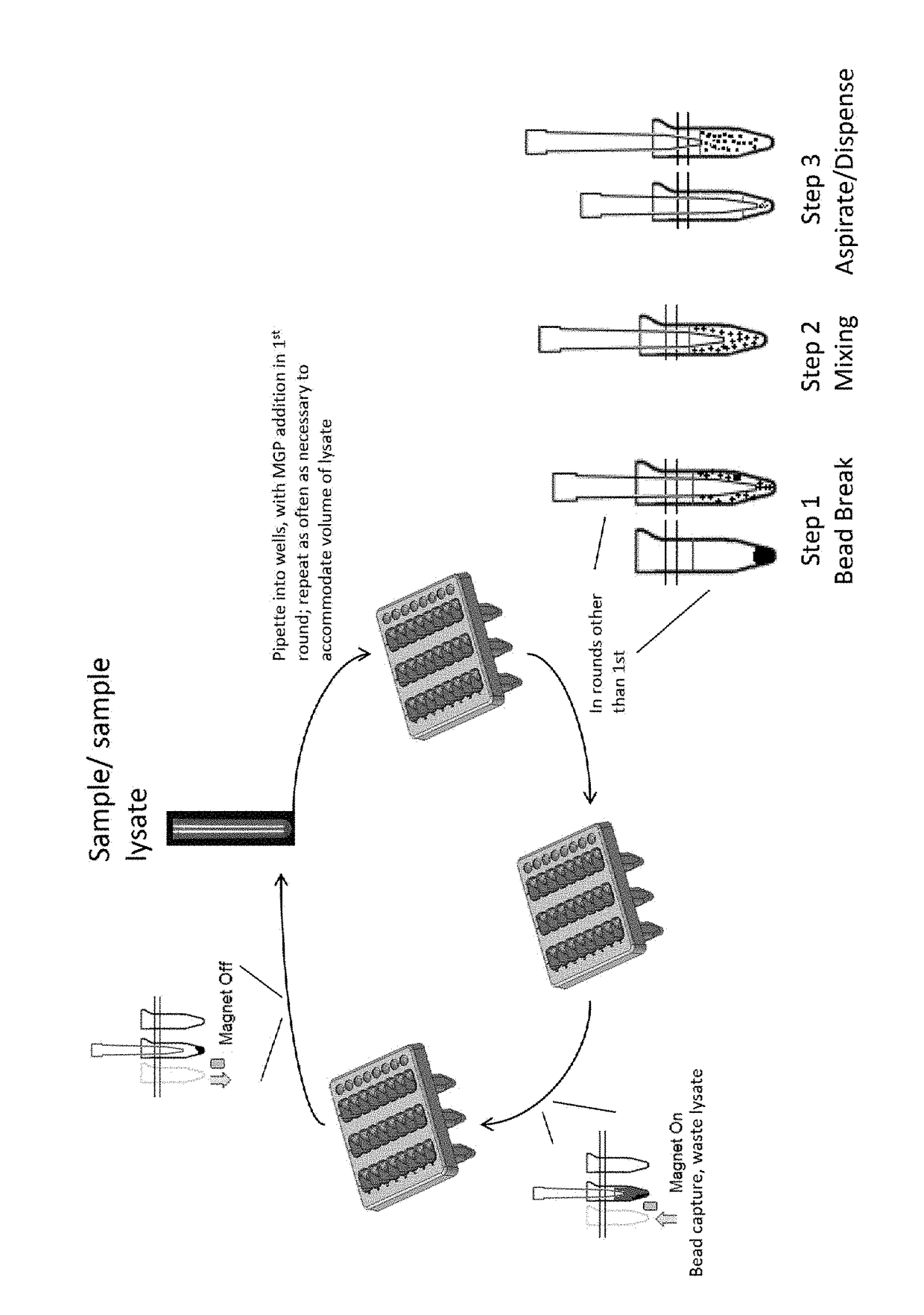Successive capture of nucleic acid by magnetic glass particles
- Summary
- Abstract
- Description
- Claims
- Application Information
AI Technical Summary
Benefits of technology
Problems solved by technology
Method used
Image
Examples
example 1
[0050]Known amounts of purified cell line DNA and linearized plasmid were spiked into PBS and percent recovery (yield) was measured by qPCR. Four (4) mL sample was lysed off-board with 4.5 mL MagNAPure 96 Lysis Buffer (Roche) and Proteinase K in an appropriately sized tube. The lysate was vortexed to mix and then added onto the instrument deck of either the Instrument 1 or Instrument 2. An aliquot of the lysed sample was added to the process well for automated nucleic acid capture on MGPs. MGPs were added in the initial step and mixed with sample by pipetting. The MGPs were captured using a magnet applied to the side of the process well, and liquid lysate was aspirated, leaving only nucleic acid-bound MGPs in the processing well. The next aliquot of the same sample was added to the same process well and mixed with the MGPs. The mixing involved breaking the clump of magnetized MGPs by pipetting at the bottom of the well. At this point, the beads were suspended in the bottom half of t...
example 2
[0054]The bead-breaking method was repeated as shown in FIG. 1. In this example, known amounts of target DNA fragments were spiked into blood, and percent recovery (yield) was measured by qPCR. Eight (8) mL of plasma was used, requiring 4 aliquots to be applied to the beads, which were reused throughout all 4 rounds of nucleic acid binding. In addition, the elution temperature used to remove nucleic acids from the beads after the successive rounds of binding was greatly reduced. This, potentially combined with the small fragment lengths used as targets, resulted in lower yields compared to those shown in Table 1.
[0055]If the beads were not effective at binding the target nucleic acids in successive rounds, the maximum yield that could be expected is 25%, only the first of 4 rounds would yield target nucleic acid. However, as shown in Table 2, significant target nucleic acid was bound in successive rounds and recovered for qPCR.
[0056]
TABLE 2PCR TargetPercent YieldCV (%)66 bp49.5%3.48...
PUM
| Property | Measurement | Unit |
|---|---|---|
| Diameter | aaaaa | aaaaa |
| Volume | aaaaa | aaaaa |
| Volume | aaaaa | aaaaa |
Abstract
Description
Claims
Application Information
 Login to View More
Login to View More - R&D
- Intellectual Property
- Life Sciences
- Materials
- Tech Scout
- Unparalleled Data Quality
- Higher Quality Content
- 60% Fewer Hallucinations
Browse by: Latest US Patents, China's latest patents, Technical Efficacy Thesaurus, Application Domain, Technology Topic, Popular Technical Reports.
© 2025 PatSnap. All rights reserved.Legal|Privacy policy|Modern Slavery Act Transparency Statement|Sitemap|About US| Contact US: help@patsnap.com

